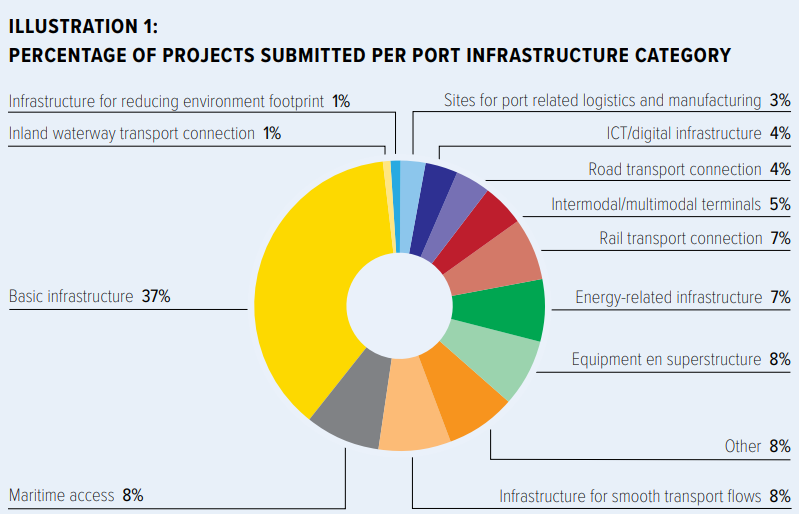Seaports have evolved from being mostly responsible for receiving ships, to a more complex entity which is now directly or indirectly linked to maritime transportation. ESPO conducted a study to determine of the amount port investments corresponds to this transformation.
Ports are now playing a key role for passengers’ connectivity, with many of them having been developed into strategic nodes for energy generation, trade, storage and distribution, and increasingly important clusters of industry and blue economy.
Despite the recognition of the significant role of ports and their very diverse responsibilities, port projects initiated by port managing bodies only succeeded to attract 4% of the Connecting Europe Facility (CEF) transport funding during the period 2014 – 2017.
Namely, according to estimations by the European Commission, the investments from 2016 until 2030 needed for further improving European Ports, amount to about 750 €billion.
European seaports are currently in need of important investments of around 48 €billion (5 €billion annually) for the period 2018 – 2027. As these investment needs are mostly caused by dynamic and continuous trends, such as the logistics industry development, the port industry and environmental requirements, port investments will remain crucial in the future.
Even though port infrastructure is still the largest investment needed, other needs include:
Maritime access;
Rail transport connection;
ICT/digital infrastructure;
Energy-related infrastructure;

For more details regarding ports investments needs, please click the PDF herebelow































































